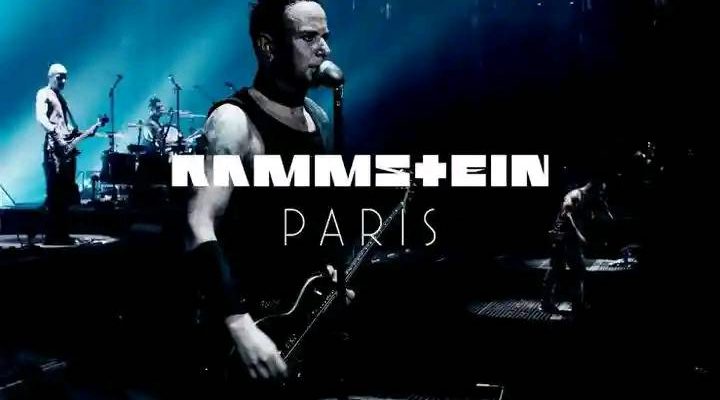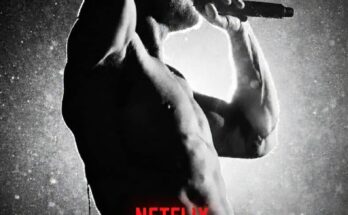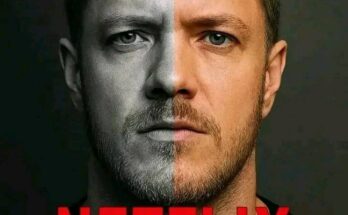The videos for “Du riechst so gut (’95/’98)” and “Seemann” from Rammstein’s groundbreaking debut album Herzeleid have finally been released in digitally restored versions, giving fans an extraordinary chance to experience the early visual era of the band in breathtaking quality. For longtime Rammstein followers, this restoration marks not just a revival of classic visuals but a deep dive into the genesis of a band that would later redefine industrial metal, performance art, and shock aesthetics on a global scale. Nearly three decades after their original release, these two music videos—now presented in stunning clarity—carry an intensity and artistic vision that remain unmatched, solidifying Herzeleid as one of the most important debut albums in the history of heavy music.
“Du riechst so gut” was the song that ignited the fire. Originally released in 1995 and then reimagined in 1998, it was Rammstein’s first single, an introduction to the world of their distinctive fusion of mechanical rhythm, gothic sensuality, and lyrical ambiguity. The track’s title, which translates to “You Smell So Good,” encapsulates the band’s fascination with the primal and the perverse—love and desire intertwined with darker instincts. The original video, directed by Emanuel Fialik, depicted the band members as spectral, haunting figures in a surreal, forest-like setting. It was raw, eerie, and experimental, reflecting the band’s early efforts to forge a unique aesthetic. With the digital restoration, fans can now witness the video’s atmospheric imagery with crisp detail: the fog, the firelight, the mysterious woman, and the sense of forbidden pursuit—all magnified by modern technology, allowing new viewers to appreciate the striking visuals and cinematography that were ahead of their time.
Three years later, the 1998 re-release, “Du riechst so gut ’98”, offered a complete reimagining of the song and its accompanying visuals. Directed by Philipp Stölzl—who would later direct Rammstein’s iconic “Du hast” and “Mein Herz brennt” videos—the 1998 version transformed the narrative into a gothic fantasy, set in a lavish 18th-century ballroom filled with aristocratic excess and dark romanticism. The band members, dressed as supernatural hunters, pursue a mysterious woman through a decadent masquerade that eventually turns macabre. With the restoration, the opulent sets, candlelit halls, and vivid contrasts between beauty and horror have been enhanced to a near-cinematic level. The textures of the costumes, the gleam of chandeliers, and the raw physical presence of Till Lindemann—all are now brought to life with stunning precision. This restoration not only reintroduces the video but reinforces Rammstein’s early mastery of visual storytelling, long before music videos became the dominant art form in digital music culture.
Then comes “Seemann”, perhaps one of the most haunting songs from Herzeleid. In contrast to the mechanical aggression of tracks like “Wollt ihr das Bett in Flammen sehen?” or “Asche zu Asche”, “Seemann” is melancholic, poetic, and introspective—a ballad that showcases the emotional range of Rammstein’s sound. The title means “Sailor,” and the song’s lyrics evoke themes of loneliness, loss, and drifting through emotional oceans. Its video, directed by Matthias Heuser and Norbert Heitker, is a study in minimalist surrealism: the band appears on a small boat moving across an endless black void, while Lindemann delivers his lyrics with haunting restraint. A woman dressed in white—symbolizing both purity and ghostly detachment—walks beside the floating vessel, defying logic and gravity. The restored version of “Seemann” amplifies the stark contrasts and the deep shadows that define its visual style. Every detail, from the slow ripples of the water to the intensity in Lindemann’s gaze, feels sharper and more haunting than ever before. The restoration gives the video new emotional depth, turning it into a piece of timeless visual poetry that mirrors the song’s aching beauty.
What makes these restorations particularly powerful is their ability to transport the audience back to Rammstein’s formative years—when the band was still defining its identity, experimenting with sound and imagery, and constructing the industrial mythology that would later dominate world stages. Herzeleid, released in 1995, was a record that introduced the sound of East German metal to a post-reunification Europe. At a time when mainstream rock was saturated with grunge and Britpop, Rammstein brought something entirely new: pounding, martial rhythms, metallic riffs, and lyrics delivered in a theatrical baritone that oscillated between menace and desire. Their visual presentation, too, was revolutionary—provocative, theatrical, and often unsettling. The videos for “Du riechst so gut” and “Seemann” were central to this identity, blending cinematic ambition with the raw energy of industrial music.
The digital restoration process represents more than just a technical upgrade—it’s an act of preservation. Over the decades, early film and video masters degrade, colors fade, and details are lost. By restoring these classics in high definition, Rammstein’s team ensures that future generations can experience the band’s earliest artistic statements in the way they were originally envisioned. The restorations were handled with immense care, using the original materials where possible, and maintaining the authentic textures of 1990s cinematography while enhancing clarity and depth. The result is a perfect balance between historical fidelity and modern brilliance. The grain of film remains intact, but every frame feels revitalized, glowing with the eerie power that defined Rammstein’s aesthetic even in their infancy.
It’s also fascinating to consider how these videos capture the band’s evolution not only in style but in philosophy. “Du riechst so gut” represents the predator and the prey—an exploration of obsession and instinct, wrapped in metaphor and myth. It’s the moment Rammstein introduced the world to their dark fascination with human nature. “Seemann”, on the other hand, offers the opposite: surrender, melancholy, and the loneliness of emotional exile. The two videos together form a dual portrait of the human condition, showing that even from their first album, Rammstein were not just musicians but philosophers of sound and image. In both, Lindemann emerges as the central figure—not just a frontman but a storyteller, a presence that transcends lyrics and performance, embodying the emotion and ambiguity at the heart of each piece.
From a cultural perspective, the release of these restored videos also reminds us of the importance of Herzeleid as the cornerstone of Rammstein’s legacy. When it first arrived in 1995, the album’s mix of industrial precision and emotional ferocity was unlike anything Europe had ever heard. Critics were divided—some were shocked, others enthralled—but it didn’t take long for Herzeleid to become a cult classic. The videos for “Du riechst so gut” and “Seemann” were crucial in this transformation, helping the band build a visual mythology that made them instantly recognizable. These were the years when Rammstein were defining the look and sound of what would later be known as “Neue Deutsche Härte,” a genre that would influence countless bands across Europe and beyond.
With the restorations now available digitally, fans can finally experience these early visuals as they were meant to be seen: on modern screens, with full detail and vibrancy. This release also coincides with a broader movement in music history preservation, where artists are reclaiming and restoring their early works for the digital age. In Rammstein’s case, the restoration serves not just nostalgia but recontextualization—it invites new fans, who may have discovered the band through recent albums like Zeit, to see where it all began. It’s an opportunity to trace the lineage from the haunting fog of “Du riechst so gut” to the monumental flames of their modern stage shows. For a band so obsessed with fire and transformation, these restorations feel almost poetic—an act of rebirth through technology.



